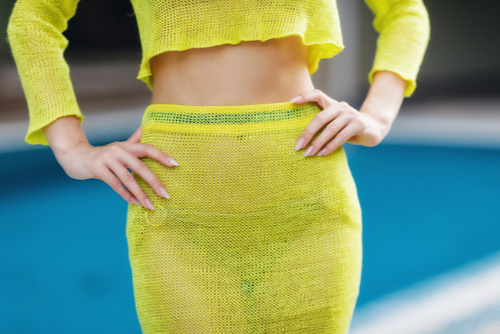
The temples are among one of the areas of the face that loses volume first. In fact, even just an active lifestyle can lead to hollowed out temples. Therefore, temple filler is becoming a more popular treatment to round out the face and provide a more youthful appearance. Patients often like to know the dermal filler that will give them the best results so they may ask, “What filler is best for the temples?”The best filler for the temples will vary based on the patient, their anatomy, and their goals. Typically, the temples require more filler than other areas because of how much space is present. Additionally, the temples, even though they carry a small amount of fat, are a rather bony area. Therefore, a softer filler is usually not preferred. The fillers that the injectors at The Gallery of Cosmetic Surgery use may include fillers such as Restalyne Defyne, Juvederm Voluma, and Restylane Refyne. Nearly any dermal filler can be used in the temples if the patient is the right candidate for that particular filler. Your injector will discuss the numerous options available during your consultation.To schedule a consultation with an injector at The Gallery of Cosmetic Surgery, call us at 425-775-3561. You can also reach out online via chat, contact form, or Price Simulator®.

An abdominoplasty, also known as a tummy tuck, is a popular plastic surgery that involves removing extra skin and small portions of fat from the abdomen. However, not all tummy tucks are the same, there are several different types. The most common are mini, standard, and extended tummy tucks. There is a less frequently performed technique called a fleur de lis tummy tuck. What is the difference between abdominoplasty and fleur de lis? A standard abdominoplasty uses an incision that spans along the lower abdomen. The extent of the incision depends on the type of tummy tuck, but the most common is one that goes from hip to hip. A fleur de lis tummy tuck also uses this incision, but also includes a vertical incision, creating a shape similar to a fleur de lis. The length of both the horizontal and vertical incisions depends on the patient’s goals and anatomy. Dr. Jonov may recommend a fleur de lis tummy tuck if the extra skin extends up to the waist or upper abdomen. It is common for patients who have lost massive amounts of weight to benefit greatly from this tummy tuck technique. While the incisions and subsequent scarring have a chance of being more extensive, the procedure can completely change the look of the body, especially in clothing. To find out whether a traditional tummy tuck or a fleur de lis abdominoplasty is best for you, schedule a consultation with Dr. Jonov at The Gallery of Cosmetic Surgery. He specializes in the fleur de lis technique and has widely performed the procedure. To schedule, call us at 425-775-3561. You can also reach out online via Price Simulator®, chat, or contact form.

Following breast augmentation surgery, most patients can fully return to all activities within six to eight weeks. However, just because they resume exercise and lifting does not mean that they have seen their final results or fully recovered. In general, plastic surgeons consider results final and recovery finished after nine months to a year. So, let’s look at what to expect a year after breast augmentation.The first year following breast augmentation surgery is the most crucial. This is when the breast implants will drop into position, when most complications occur, and when patients can begin enjoying their newly augmented breasts. When you hit the one year mark, your implants should have dropped, your breasts should feel soft, and any noticeable side effects should have subsided.Dr. Jonov may or may not want to see you for a one year post-op, depending on how the rest of your recovery went, or if you have concerns. Most breast augmentation complications–while rare–tend to happen within the first year. Therefore, after your one year post-op, you will only need to follow up with Dr. Jonov if you have concerns.At one year, patients should see the full results of their breast augmentation surgery. This is when it is truly possible to gauge the outcome. To schedule a consultation with Dr. Jonov, call us at 425-775-3561. You can also connect with us online via Price Simulator®, chat, or contact form.

Radiofrequency microneedling–more commonly known as RF microneedling–is a form of microneedling that reaches deeper below the skin’s surface. This means that the controlled damage is more than on the surface of the skin. It is ideal for improving the appearance of acne scars, sun damage, and aging. When a master esthetician describes the procedure to patients, a frequently asked question often follows, “Is RF microneedling painful?”In technicality, the procedure is more painful than traditional microneedling. However, in practice, patients barely feel the procedure because topical numbing cream is applied beforehand. This keeps the procedure nearly painless and most patients remain perfectly comfortable throughout the treatment.Patients may feel the pressure of the device against their skin and some may experience some minor discomfort if they have sensitive skin, or towards the end of the procedure. To account for this, your master esthetician will adjust the settings of the microneedling device for each area. This prevents the microneedles from penetrating too deeply or causing too much damage. It also limits pain.Overall, RF microneedling is not a painful procedure. Your master esthetician will use topical numbing creams and various techniques to keep the treatment as painless as possible. To schedule a consultation, call us at 425-775-3561. You can also reach out online using Price Simulator®, chat, and contact form. 





Recent Comments